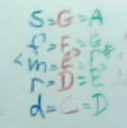What Is Solfege and Why Is It Important?
One of the principal tools used in Kodály music education is the movable-do system of solmization, or solfege, or sol-fa which was originated by Guido d’Arezzo in the eleventh century. In this system the tonal center of a song is do in the major and la in the minor modes, whatever the key may be. One can move the tones of a melody anywhere on the staff, and the solfege syllables which disclose the relationship of the notes to each other remain the same. It becomes a very effective tool in revealing melodic/ harmonic structure and tonality to the musician.
Kodály first saw this system when he visited England and observed choral training there. The method he saw in use was essentially the one developed by Sarah Glover and later refined by John Curwen in the nineteenth century. He had this to say about this effective tool:
“Only the well-conducted teaching of sol-fa can develop the ability to connect tone-image with written note to the point where the one will evoke the other instantly.” (F. Bonis, The selected writings of Zoltán Kodály,. New York: Boosey & Hawkes)
In other words, sol-fa helps students hear what they see and see what they hear. It simultaneously reveals tonal relationships and gives them a name and a symbol. It is simply the thousand-year-old original, easiest, and best means of comprehending the architecture of music.
Most Americans’ knowledge of sol-fa is limited to the song in Sound of Music that is so familiar. But maybe you asked yourself like I did, “Why is Maria teaching the children how to sing that way? That’s not how I learned music.” I didn’t know that she was teaching them a skill which I did not possess. Many people who play an instrument consider themselves able to “read music,” even though they often cannot accurately sound out a single interval without their instrument. I was not taught to hear in my head what was on the page. A piece of the music puzzle was missing in my training; that is, until I finally took an aural skills class in college.
So, why wasn’t it taught? Was that something only European musicians learned? Bodman and others remember that up until the middle of the 20th century in America, sol-fa was in the curriculum. As teachers began to try to “simplify” music for their students, it was all too easy to take the shortcut and skip the sol-fa. The trouble is, the knowledge of musical structure based on the educated ear was sacrificed, and we became more technicians than musicians. (Now, you can even learn to play a keyboard instrument by pressing the key down that lights up for you. Sort of like, painting by the numbers.)
When I got to my college aural skills classes, I was very surprised that I was expected to have a skill that no one told me about all those years I was practicing. Now that I know its value, I have to ask, “Why didn’t someone teach me that from the beginning?”

